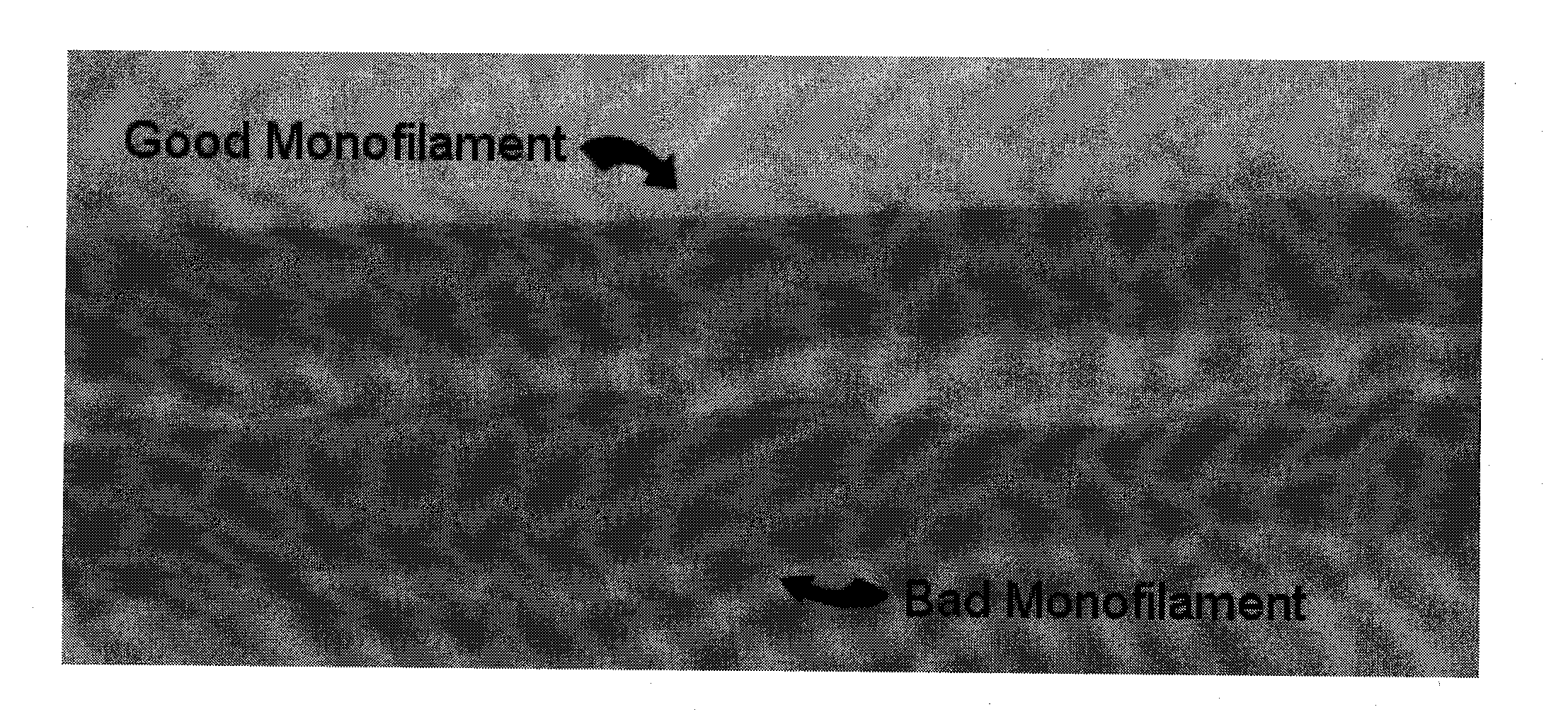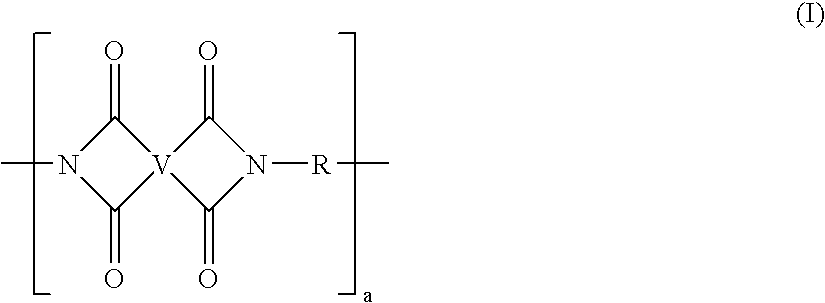Intrinsically conductive thermoplastic composition and compounding processing for making conductive fiber
- Summary
- Abstract
- Description
- Claims
- Application Information
AI Technical Summary
Benefits of technology
Problems solved by technology
Method used
Image
Examples
examples
[0046]A first set of experiments was performed to evaluate multiple conductive thermoplastic compositions to determine whether they provided adequate conductive characteristics and to determine whether they were capable of being formed into fibers including monofilaments that could then be used in one or more subsequent applications.
[0047]For each of these samples, the conductive thermoplastic compositions were formed using an extrusion process. A 25 mm 10 barrel Werner & Pfleiderer twin-screw extruder with a screw designed for improving distributive dispersion was used to make the samples. The zone temperatures were set in the range of 237 to 249° C. for PBT based materials, while for PEI based material, the zone temperatures were set at 369 to 372° C.
[0048]Pellets were dried using a MaGuire low pressure vacuum dryer for 1 hour before injection molding into testing specimens using a 220-ton Cincinnati injection-molding machine. Melt temperatures were 490° F. and 700° F. for PBT and...
PUM
| Property | Measurement | Unit |
|---|---|---|
| Percent by mass | aaaaa | aaaaa |
| Percent by mass | aaaaa | aaaaa |
| Percent by mass | aaaaa | aaaaa |
Abstract
Description
Claims
Application Information
 Login to View More
Login to View More - R&D
- Intellectual Property
- Life Sciences
- Materials
- Tech Scout
- Unparalleled Data Quality
- Higher Quality Content
- 60% Fewer Hallucinations
Browse by: Latest US Patents, China's latest patents, Technical Efficacy Thesaurus, Application Domain, Technology Topic, Popular Technical Reports.
© 2025 PatSnap. All rights reserved.Legal|Privacy policy|Modern Slavery Act Transparency Statement|Sitemap|About US| Contact US: help@patsnap.com



